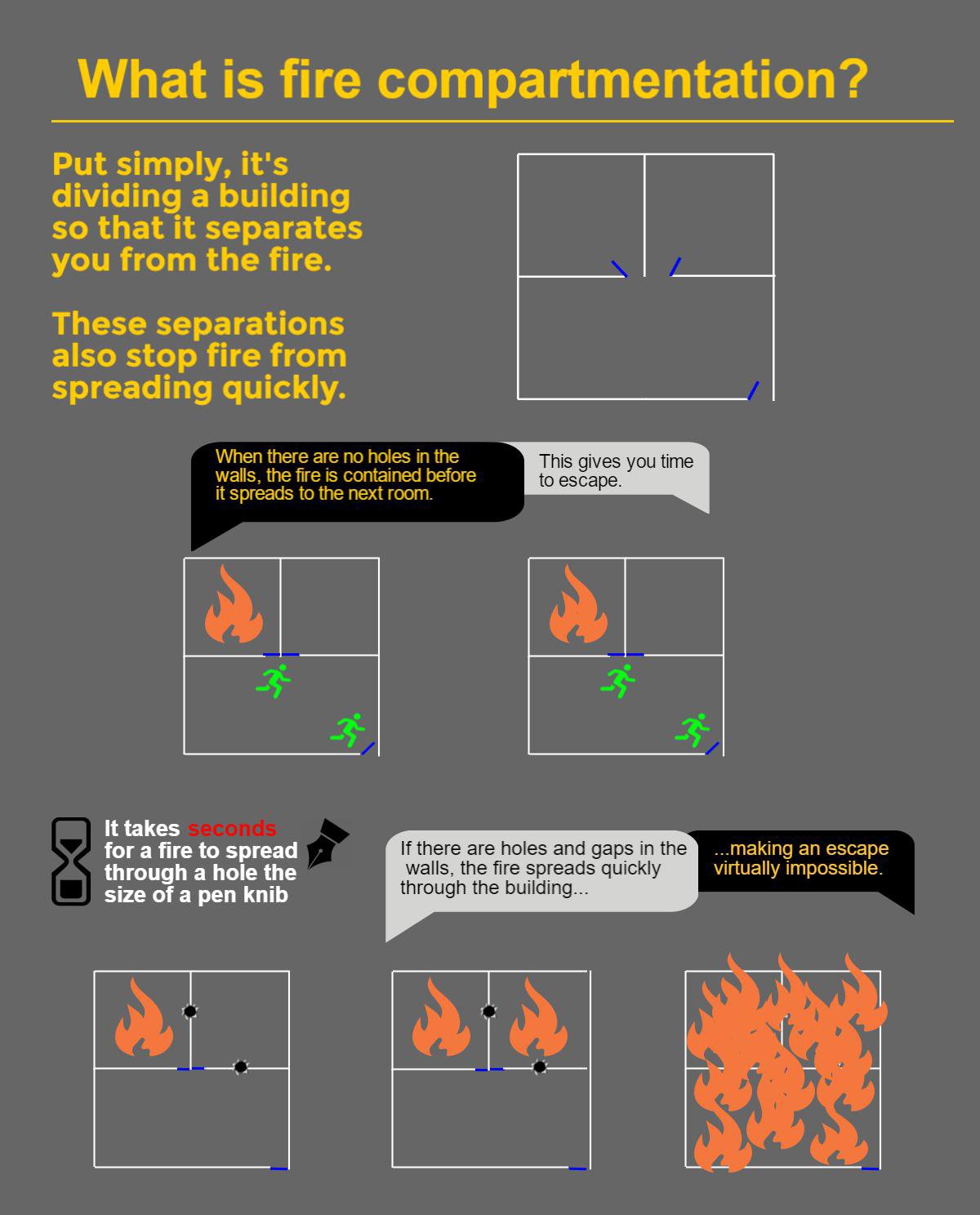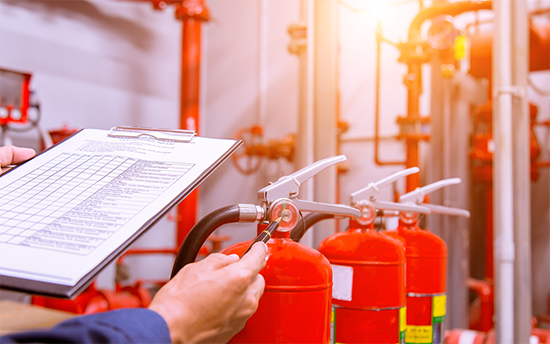After the tragedy at Grenfell Tower, fire safety is an issue on everyone’s minds. Questions are being asked about inadequate safety measures causing fire to spread rapidly through buildings with large numbers of occupants.
The Grenfell Tower investigation is ongoing, but clearly fire protection measures either failed or were not there in the first place. It is important to address how disasters like this can be avoided in the future.
Keeping fire contained
To prevent a fire from spreading, different sections of a building must be built as fire-resistant compartments. This means they will resist the passage of fire for a specified period of time. If a fire is contained in a compartment, it won’t spread to other parts of the building. People can evacuate safely and firefighters can extinguish the fire.
In a tower block, for instance, each flat should be a separate, fire resistant compartment. This would ensure that if one resident started a fire, it would not spread to other flats for a specified amount of time (usually 30 minutes).
Day-to-day, the most important way for a building’s occupants to keep a building safe is through keeping fire doors closed. Fire doors are specially made to resist fire for a certain amount of time and keep the fire contained within that compartment. If the door is open, the fire will spread rapidly. This is why wedging open fire doors is so dangerous.

Compartmentation keeps a fire contained, giving time for emergency services to deal with the situation. People should also be able to evacuate safely and damage to a building is minimised.
Make sure you are aware of holes and gaps in the walls from installing piping and wiring through a building. When you drill holes through a building to run cables and those holes aren’t filled in, you severely compromise any fire safety plans in place. If a fire starts, it will spread through any gaps, igniting anything flammable in its path.
Keep people informed
Hand in hand with compartmentation is the need for all building users to have clear information on what is the safest action to take, whether that is to stay put and await the fire service, or evacuate safely.
It is important to note that a building’s occupants should only be advised to stay put if compartmentation measures are in place. If fire doors, and fire resistant wall and ceiling protection materials are inadequate, it is NOT SAFE for building users to be advised to stay put. Under these circumstances, occupants should evacuate as quickly as possible.
Evacuation routes need to be clearly marked, all building users, including visitors, need to be informed of fire safety procedures, and information has to be readily available at all times so people can check anything if they are unsure.
All landlords, building owners, managers, and other responsible people have a clear responsibility under the law that their premises meet all fire safety requirements. Buildings must be effectively maintained to provide protection in the event of a fire.
A thorough risk assessment must be carried out to make sure that all buildings have the correct fire safety measures in place. When regulations are breached, lives are at risk.
Lessons from Lakanal House
Unfortunately, lessons were not learned from the Lakanal House tower block fire. Southwark Council was fined £570,000 for a 2009 tower block fire in which six people were killed. The London Fire Brigade brought the prosecution against the council as Lakanal House in Camberwell, south London, had a number of structural and safety issues which breached fire regulations.
During the investigation into the cause of the fire, it was revealed that 999 operators had told residents to stay in their flats. This meant that some residents were trapped when the fire spread more rapidly than anticipated.
Stay put was the wrong advice
Emergency service operators were rightly following the ‘stay put’ procedure for tower blocks which has been in place since the 1990s. When dealing with emergency situations, 999 operators offer advice based on the assumption that buildings have the correct fire safety measures in place, for example that fire doors would be closed and not wedged open and fire resistant materials would be incorporated into the building’s walls and ceilings. These measures prevent flames and smoke from spreading.
However, this was not the case at Lakanal House. There were inadequate compartmentation measures in place including an absence of strips or seals on doors in the buildings, a lack of cavity barriers in the ceilings and inadequate fire protection to the timber stairs in the common corridor.
At the inquest, Peter Holland, Chief Fire and Rescue advisor for the Communities and Local Government department, stated that correct compartmentation is vital for the ‘stay put’ policy in tower blocks to be safe. This would have kept the fire contained for one hour while the emergency services dealt with the situation. As the correct measures were not in place in Lakanal House, the fire spread at an alarmingly fast rate.
Due to the unprecedented nature of the situation, there was no clear guidance for operators on what was the safest action to take for residents of Lakanal House. According to Peter Holland, this would have been for residents to be told to evacuate if they felt they were in jeopardy.
Who is responsible?
Dan Daly, London Fire Brigade’s assistant commissioner for fire safety, said: “All landlords, including large housing providers, such as councils and housing associations, have a clear responsibility under the law that their premises meet all fire safety requirements are effectively maintained to provide protection in the event of a fire and keep their residents safe.”
It is essential that risk assessments are carried out to make sure that buildings have the correct fire safety measures in place. Closed fire doors and other fire-resistant structures are vital to prevent the spread of fire in a building, so the fire can be contained and residents can stay safe or evacuate. When these regulations are breached, lives are at risk.







0 Comments
Trackbacks/Pingbacks